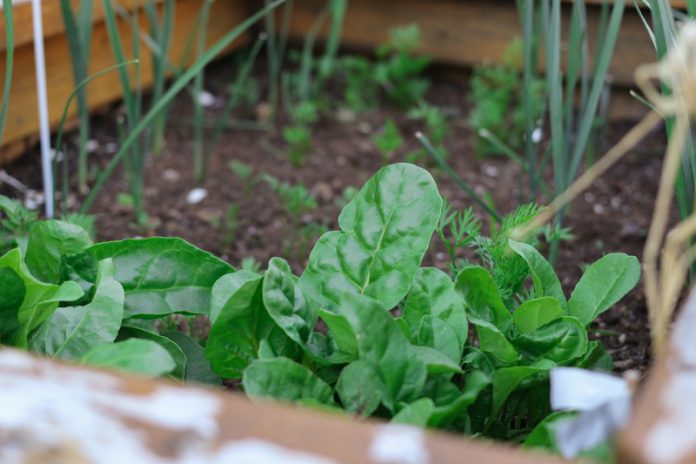Have you been struggling to keep your landscape alive? Don’t worry; we know how you feel. It can be so disheartening seeing your shrubs, plants, and trees that cost hundreds to thousands of dollars wither away. However, proper landscaping can significantly improve your home’s value and quickly make your yard feel like a scenic oasis.
However, there’s nothing magical about having exceptional lawn and landscape when you’re not well-equipped with adequate knowledge of what it takes to maintain healthy landscaping. You, too, can become a thumb green when it comes to gardens and plants. This piece is all you need to decipher why your plants may be dying. Although, it’s highly advisable you reach out to a landscaping company to help probe further. Their invaluable professional tips and experience can help address some additional concerns not covered in this article.
This article is provided by the experts at Denver Landscaping and Design. If you’d like to learn more about landscaping maintenance, click here.
6 Signs to Look Out for When Your Landscape is Dying
Some factors can negatively impact your landscaping and make them become a blemish to your home. However, it’s not impossible to keep your garden booming if you can follow this troubleshooting guide we have for you. Here are the six signs that show your landscaping is dying off.
1. Dehydration
There is no doubt that water is the ultimate source of life. Not supplying your garden with enough water may cause severe dehydration and dryness to the soil holding your greenery, thereby making your shrubs, trees, and plants malnourished. Typically, each square foot of your landscape should receive between 2,000-3000 mL of water weekly. It will help if you create a watering schedule to ensure your garden is well watered.
2. Discoloration
A clear sign that your shrubs are in poor condition is when the leaves are gradually turning yellow. In other words, when plants’ leaves become yellow, it can either be that your garden has little water or too much water.
3. Sagging plants.
Your landscape could be dying because of inadequate nutrition. Every organism will atrophy if it’s not well fed, the same applies to your garden. When plants lack nutrients, they become frail, and strong wind can easily tear them off the soil. Make it a point to fertilize your plants if you want lavish landscaping. It’s critical you adequately feed your plants during the growing season. It’s typically recommended that you feed your garden at least once a month. You can also consider adding compost to your soil for added nutrients.
4. Perforated leaves
Pests can be highly destructive to plants, and they eat plant leaves and spread diseases. Inspect your garden for bugs that might be causing harm to your plants. There are two methods of getting rid of pests out of your landscaping project. One is by removing them by hand; otherwise, you can opt for insecticides.
5. Dark and powdery white spots
It’s pretty easy for you to notice when your plants are diseased, and you can find out by a mere visual inspection. Look out for spots of fungus or dark stains around stems of plants or trunks of trees. Then again, powdery spots on the leaves are a good indication that your garden suffers from mildew disease. The white substances on the leaves hamper sunlight from reaching the foliage, preventing the leaves from undergoing photosynthesis.
6. When your plants are wilting
If your plants are wilting, it could be they are not getting adequate sunlight. Always be on the lookout during the day to figure out if the larger plants shade smaller ones. On the contrary, too much sun can be severe to the growth of your garden. When plants get exposed to excessive sun, they end up sunburned.
How Do You Bring a Dying Bush Back to Life?
The solutions to your dying shrubs are ultimately dependent on what’s making them turn brown. You should contact a landscaping professional to conduct a thorough inspection and recommend the best course of action. However, here are some troubleshooting tips.
- If your bush is shriveling, gently supply the roots with adequate water. On the contrary, if too much water is the cause, make adjustments for your soil to drain better, either by creating an elevation or adding organic mixtures to the earth.
- Routinely fertilize your plants. Inadequate nutrition is the most common cause of plants death. There’re many inexpensive systems for fertilization applications that are readily available at hardware stores or garden centers.
- By inspecting your bush for insects, you’ll be able to detect bugs that are eating up your plants’ leaves and remove them accordingly. Bugs do not only feed on leafy plants but also spread diseases between plants. Seek advice on the insecticides you’ll use to get rid of them pretty quickly.
- Ensure that there is adequate light, water, and air in the location of your garden.
What is Causing my Bushes to Die?
Many factors can cause your shrubs to die. For instance, when there’s no proper irrigation in your garden, it will wither; conversely, too much water can also kill off your landscaping pretty quickly.
Pests and diseases will make your shrubs atrophy, and bugs are hazardous to shrubs; they can easily transmit diseases to plants. Moreover, other variables that can be detrimental to the healthy growth of your bushes are poor soil nutrition, elements, excessive sunshine, and more.
Why Do Plants Keep Dying in the Same Spot?
Many reasons can make your plants keep dying in the same spot. For example, aster yellows can make your shrubs fail at the exact location continually as the spores can persist in the soil for a long time.
However, some plants are not compatible with specific soil textures. Hence, your landscaping can wilt when you install them in a location that’s not favorable to their growth. Typically plants thrive where they’re getting enough water, air, or light.
Can You Bring a Plant Back to Life?
According to ProFlowers, you can revive a dying plant if the roots are still healthy. Here is what to do, trim dead leaves and foliage to lessen what the roots support. In addition, cut off the dead parts of the stems to enable new stems to regenerate from the trimmed stems.
Conclusion
Improving your landscape should be your utmost concern. Your shrubs, plants, and trees deserve maximum attention if you would want them to flourish. There’s no other way to make your home more attractive and alluring than adding ornamental features and tending to your garden.
















